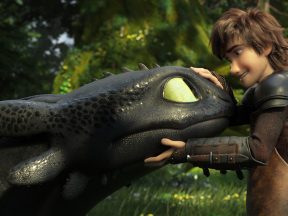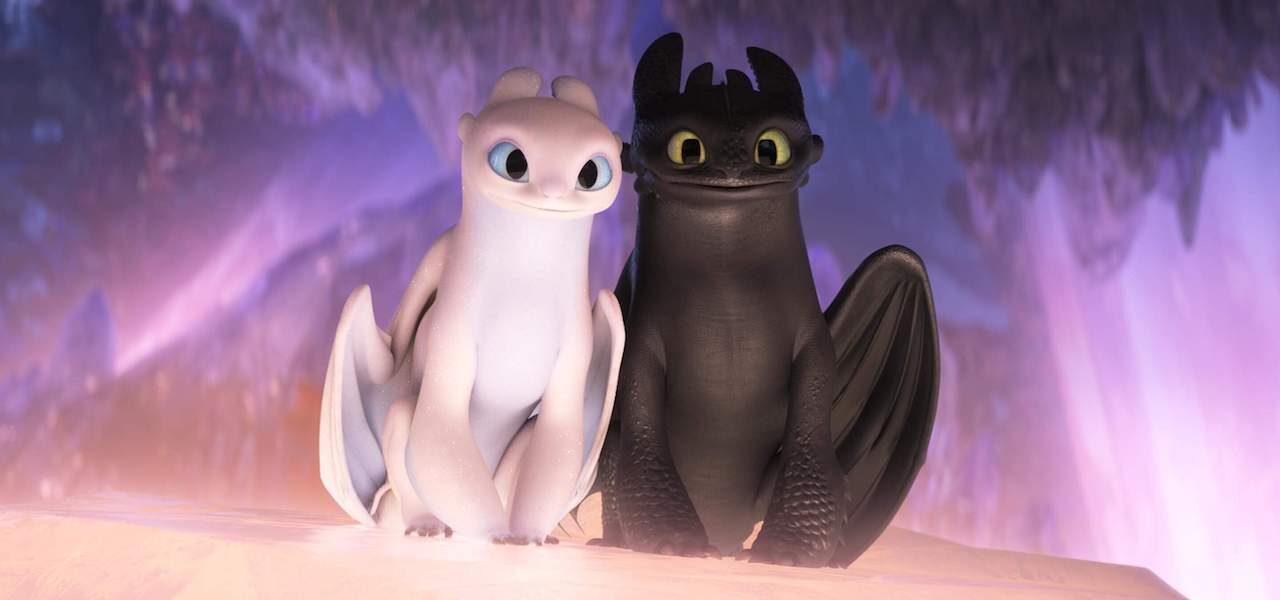
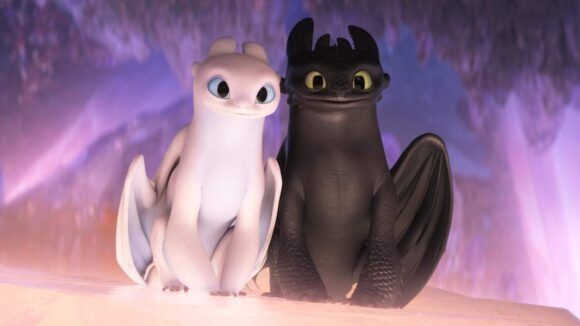
INTERVIEW: Dean DeBlois And Simon Otto Talk About The Animation Evolution In ‘How to Train Your Dragon’ Trilogy
A decade is a very long time in animation. Since the release of How to Train Your Dragon in 2010, the shape of the industry — and specifically of Dreamworks, the studio that produced it — has changed radically, as has the available technology. And because that film launched a trilogy of features, work on the sequels became an exercise in responding to the audience’s growing expectations.
The third and final installment, How to Train Your Dragon: The Hidden World, has met those expectations. It was released last year to general acclaim, box office success, and a string of accolades culminating in a nomination for the upcoming Oscars. The story manages a delicate balancing act, reviving a familiar world — centering on the human Hiccup, the dragon Toothless, and the unorthodox alliance between their species — while refreshing it with subtle innovations and new characters (such as the Light Fury, a new breed of dragon).
The trilogy’s accomplishments are partly due to a remarkable consistency in its production. Throughout the decade, while the industry has morphed around them, the core creators of HTTYD have remained largely unchanged. Notably, Dean DeBlois has stayed on as writer and director; so has the head of character animation, Simon Otto, whom DeBlois describes as “like a co-director.” The team have pulled off what few in animation even get to try: they’ve seen their characters through a saga spanning several films and many years.
As The Hidden World continues on its awards campaign, DeBlois and Otto spoke to Cartoon Brew about their work on the film and the franchise as a whole. They touch on their innovations in the production pipeline, the way they harnessed new tech, the “happy accidents” they exploited, and the importance of bumble bees…
Simon, over the course of this franchise, you really came to know your characters. Did your job become more straightforward from film to film?
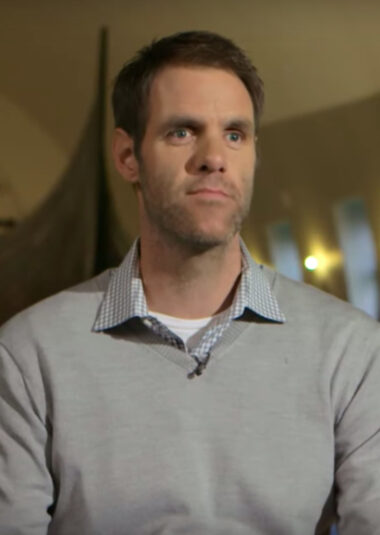
Otto: I don’t know if you can ever call animation “straightforward.” In a way yes, in a way no. What made things easier is that, across the three films, the core group of animators was pretty much the same. It became more about, how can we perform the characters in a way that hasn’t been done before, while staying true to the characters? We didn’t have to talk about design or how they’re posed or what their expressions would look like. We could really dig into the depths of the characters.
The disadvantages… For example, we had flight sequences in all three movies and the question was really, how can we top what we’ve done before? Everything began with Dean, because a lot of it came from the writing.
Did returning to the same characters ever feel like a limitation?
Otto: That didn’t come up once. On the contrary, we were excited to continue the story… It’s funny: I keep saying that HTTYD is my baby as much as it is Dean’s, and the animators say the same thing about it. You’re in love with these characters. I think it’s a once-in-a-lifetime opportunity to work on characters that have this epic arc, which concludes.
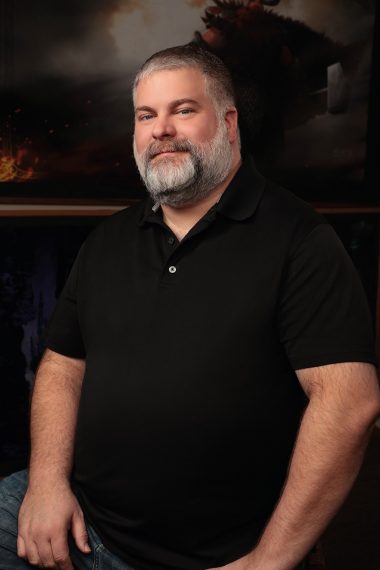
DeBlois: Simon was the first head of character animation that pushed the idea of supervisors back into our production pipeline — the idea that you’d have selected top animators lead certain characters, and a team of animators to follow their lead. That had been abandoned for a while at Dreamworks, just because it’s really hard to manage the inventory. But Simon worked really closely with the department supervisors to anticipate inventory so that we could have supervisors in place.
What that gave us from an artistic point of view is an in-depth knowledge of not just the rig and all its capabilities, but of the character, and how the character would react in every scenario. That started on the first film and was carried through, so we largely had the same supervisors for these established characters in the second and third installments. You can see the character depth come through.
And because they’re aging onscreen, they’re also maturing. Because of that, I think the animators never got bored of their characters. We were always adding more controls and tools that allowed the animation to be that much more subtle and fluid.
So the decision to have supervisors was made before you knew HTTYD would become a trilogy?
DeBlois: Yeah. It’s the way we used to work in hand-drawn animation. Because of the nature of producing computer animation, it was not as easy to have a character supervisor. But it’s something the animators really wanted. Simon pushed for it, we supported it, and they were able to put it through. It changed the way movies are being produced now at Dreamworks.
Turning to technology: how has the development of previsualization changed your approach?
DeBlois: Because previz is a much closer representation to the shots we’d like to have in the film, you can get really specific with blocking and the shot intention. Storyboards are great for the intention, then as we move through previz — because we have actual models to work with, both set and characters — we can really start to set the composition that we want, and investigate dynamic shots, like wanting to top ourselves with flight sequences.
Obviously, it helps everyone else in the pipeline to get a more realized sense of where the shot is going. Now, these previz shots have texture, you know. Some of the better previz artists are quite good animators as well, so they can really represent the intention of the shot.
Otto: The only thing I’d add is that previz gives the editor the chance to have coverage of certain events. It’s really hard to storyboard the scenes around the Hidden World, where they fly down the waterfall. [In previz] you get a sense of the epicness of the waterfalls; it gives you ten different angles and ten different camera moves to portray a certain moment.
It gives us [animators] a better starting point to talk about performance, particularly with action. The screen direction, the eye direction: it all more or less works out, so we can really focus on performance. Sometimes it’s a little harder when you just have the storyboards… With the clarity of a really tightly cut sequence, we could dive in.
But you also want to give the opportunity for new ideas to come in, for accidents to happen. What an animator has done in the previous shot could affect the following shot. [Head of layout] Gil Zimmerman was such an important part of staging the movie. He collaborated with us and took those opportunities.
Can you give an example of a happy accident that worked its way into The Hidden World?
Otto: I knew you were going to say that! Particularly the “Forbidden Friendship” scene [where Toothless tries to woo the Light Fury — see a clip below]. Because it’s pantomime — because so much comes from how Toothless goofs around the Light Fury, trying to seduce her, or the way she smacks him on the nose…
For example, we had to sell the idea that Toothless can’t fly without Hiccup again. You tend to over-explain it, then once you see the animation, Toothless is smacking the tail or flying off and crashing into the water… The way it’s performed is so much more subtle… It’s moments like that, where the clarity really comes through in the animation.
DeBlois: It’s similar to how we use dialogue. A lot of the initial writing over-explains everything. I call it “scaffolding dialogue”: it helps us get through early screenings internally, and even some of the test-audience screenings. But once you have the animation in place, and the subtlety of pantomime expression, a lot of those lines can drop away.
The “Forbidden Friendship” scene is remarkable, in that it’s quite long and dialogue-free. How did it evolve from storyboard onwards?
DeBlois: There was a lot of upset on the first film, during [a similar dialogue-free] sequence also called “Forbidden Friendship” [in which Hiccup befriends Toothless]. That one was about five minutes long, and we had producers ranting about it. But that moment was inspired by Caleb Deschanel’s beautiful photography in The Black Stallion, and we knew it had to breathe.
For this tit-for-tat to really work between boy and dragon, we had to rely upon careful, very intentional, subtle pantomime animation, and John Powell’s beautiful score, which would reveal the turns within the story. It was literally a choreographed dance, but it was also a dance between the animators and the music.
So that’s what we intended to do here again, but this time with two dragons. Knowing that we’re doing a trilogy, it’s nice to have moments that connect the whole.
The Light Fury contrasts so nicely with Toothless in her movements. Her supervisor was Thomas Grummt…
DeBlois: Thomas knew that we had to present a contrast between Toothless, who’s the Alpha Dragon, but has been corrupted, in a way, by his time with humans — he’s domesticated — and is the last of his kind. So he’s kind of at a loss when it comes to primal things like a courtship ritual. And then you have the Light Fury, who’s a pure dragon with very limited exposure to humans. So we wanted to play that bumbling, amateur quality against someone who has expectations and a maturity to her.
Otto: I talked a lot with Thomas about what sort of shape language we’re looking at with her, and her contrast with Toothless. His elbows are up, his posture is a bit more masculine, maybe a bit more of a salamander; we also looked at cats and dogs. Like with every dragon, we needed to find reference points — we needed to have the dragons feel like they’re grounded in the reality of an animal world.
[For the Light Fury, we looked at] snow leopards, serval cats — super-elegant, very streamlined types of cats. But also terns, these really streamlined seabirds. We spent so much time figuring out how we could make the Light Fury so elegant, so light-footed, but also give her a sense of scale and weight.
In the last ten or 15 years, what audiences know about animals has changed. Nature shows with very high production values and increasingly exotic animals have become more common. Audiences have a wider frame of reference…
Otto: Absolutely. When we were looking for ideas for [the “Forbidden Friendship” scene between the two dragons], we started collecting the ideas we either remembered from nature shows or found on the internet, like the birds of paradise who have all kinds of mating dances, and albatrosses. We came up with a “best of” list, then took it to a whole other level and invented new ones!
DeBlois: Was that list compiled before we had [storyboard artist] Bolhem Bouchiba take a crack at it?
Otto: He saw some of them, and I think he came up with a few. This is a case where the storyboard really influenced how we animated the scene. Bolhem brought most of the ideas, which we then expanded upon. But that whole bird of paradise dance was already there.
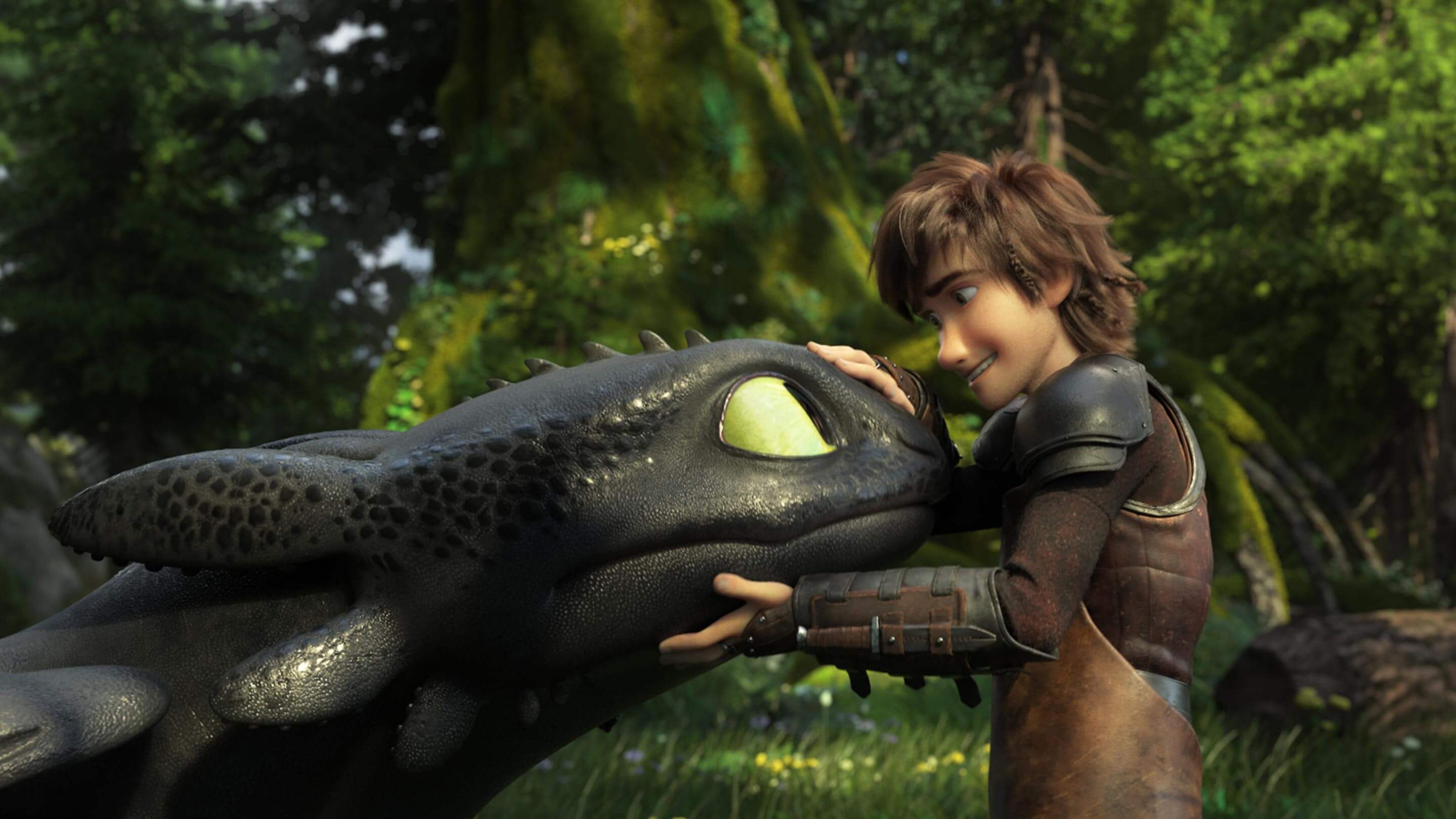
Did you use any non-animal references for the dragons?
Otto: Particularly in the first movie, we wanted to make sure that every dragon represents a clear idea of things that we know… For the Gronckle, we had references of Harley-Davidsons, helicopters, bumble bees. We also did some hand-drawn animated tests that we would mix together. It gave animators a springboard.
By the third movie, we wouldn’t do as much preparatory work, but we did always look for clips that would give us reference and a starting point. And it was never just one point. Because we never wanted [a dragon] to feel like another animal. We wanted it to be familiar…
How did the relationship between the two of you evolve across the trilogy?
DeBlois: Simon is also a storyboard artist, and he’s also been directing episodes of the HTTYD tv series, so he’s probably the most well-rounded artist that I’ve worked with. An all-purpose filmmaker. I came to know this over the crafting of the three movies.
We worked closer and closer together, from the inception, through scripting — he’d be one of the first people I’d give a draft to, and he took it upon himself not only to design new characters like the Light Fury, but also to storyboard key sequences. And then, of course, wrangling the best animators we could get…
Simon above all, during the course of production, was the one pushing back against those people that were eyeing quotas and budgets closely. He was never willing to sacrifice quality for simply hitting our production goals. That’s the sort of balance you really need in the mix: people who value the integrity and the art of simply getting it done on time. Simon also contributed some really wonderful shots of animation. For me, he’s like a co-director, my most trusted person on the crew.
Otto: I think I can take the day off — thank you Dean! In terms of how our relationship evolved: between the two of us, the way we were running dailies, I’d have a Cintiq [tablet] in front of me and we could draw… Dean would come at it from a story angle, and I’d come at it from a graphic point of view.
What was amazing was being allowed to challenge Dean’s ideas openly, suggest different things, and get the conversation going with the animators, who also felt comfortable bringing ideas forward. That made for a really great collaborative relationship, which is such a rare thing. I think John Powell called Dean “a unicorn among assholes”!
Simon, you’ve left Dreamworks. You started out in 2d animation — can you see yourself going back to it?
Otto: Absolutely. I’m working on film projects that have some 2d in them. Right now I’m developing some shows — I was directing television between HTTYD 2 and The Hidden World, and I caught the bug, so I’m pursuing that. I’m really looking forward to that. After 12 years on HTTYD, it was time to see what the next chapter could be.
(DeBlois’s and Otto’s answers have been edited for brevity.)

